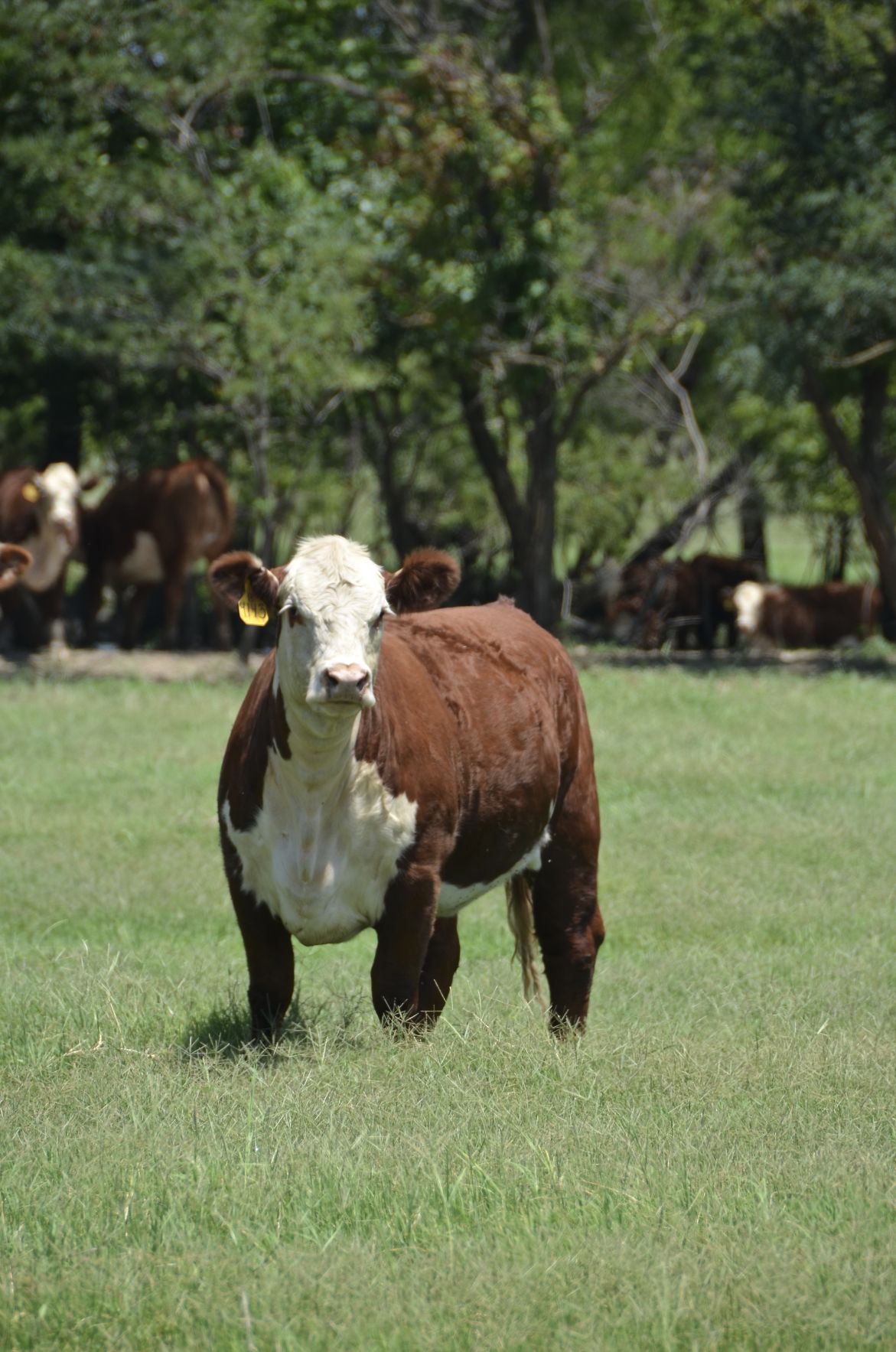Foot and leg structure is important for longevity
Cattle producers want bulls and cows to have good herd longevity. It starts from the ground and moves up through the animal.
Shane Bedwell, chief operating officer and director of breed improvement for the American Hereford Association, says structural correctness is important when buying bulls and sorting replacement heifers.
“The set to the hock, angle to the shoulder and foot size and shape is critically important to longevity in the herd,” he said. “Having the athleticism to move around the pasture will keep the animals in the herd longer. That means they have to have the right angle to the legs and shoulders. It all works together.”
Studying an animal’s angles can show where it has problems or if it is ideal for soundness. Bedwell said without the proper 45-degree angle to the shoulder, it is hard for the animal to keep their head up and they will have a shorter step. If the angle of the hip to the hock isn’t at a 45-degree angle, the animal will be post-legged, straighter in the hock, and will miss its stride.
“It’s also important to study animals in their pasterns and toes,” he added. “You don’t want a beef animal with weak pasterns, as it will hamper their movement. The toes should go with the nose for soundness. Correct feet and legs are so important.”
Angus foot scoring
Members of the American Angus Association led a producer-driven initiative to develop foot score expected progeny differences, according to Kelli Retallick, Angus Genetics, Inc. director of genetic services.
“Since this was producer driven, breeders have given us the data needed to help develop two new foot score research EPDs, the first of its kind for the U.S. beef industry,” Retallick said.
The American Angus Association has been collecting foot scores since 2015 and has accumulated more than 17,000 data points from producers. Scores from one to nine—with five being ideal—are collected for both claw set and foot angle. The data that has been collected has been used to develop research EPDs, which were released in January 2018. The analysis of the data reported moderate heritability estimates for both, at 0.25. The research EPDs do not get updated weekly, but rather periodically as more data is put into the database.
“Though we are getting closer to a production EPD, we encourage members to continue to send in quality, consistent data,” Retallick said. “Consistency of scoring within a producer’s herd is key. We have guidelines and videos to help with the scoring.”
Producers can send in foot scoring data on animals that are yearling age—320 to 440 days of age. Older scores can also be reported on 18-month-old bulls, females and mature cows. Retallick said repeated measures, or taking more than one score on an individual throughout its lifetime, are valuable data points for the evaluation, and all scores are included in the analysis to make foot score EPDs more accurate. Genomics can be used to predict the EPDs on individuals without actual data.
“Any time producers are looking at an EPD, they should pay attention to the accuracy number. A higher accuracy will more accurately predict the outcome of a trait,” Retallick said.
Feet and leg structure
Bedwell said bad feet can be either genetic and environmental with some problems not developing until after replacement selection has been made.
“It’s so important to study feet and make sure the foundation is good. There should be some distance at the top of the claw, but not too much because then the toes can grow together too closely,” Bedwell said. “A little extra set to the hind legs is okay because they’re still functional. If the legs get too straight, they aren’t as functional.”
Bob Weaber, Kansas State University Extension beef specialist, said it’s important to watch to see if the feet meet the tracks from front to back, and to look at foot placement when the animal is standing.
“If back feet and front feet are stretched when the animal is standing still then they are too straight in their angles,” Weaber said.
Weaber’s research includes the collection of data on over 1,800 Red Angus cattle. While finding feet and leg traits are moderately to lowly heritable, he suggested producers should still select for soundness.
“Poor feet and leg traits rank as a top reason for culling beef cows from a herd,” Weaber said. “The Australian Angus Association is a leader in the area of foot and leg structure and incorporated these traits into their genetic evaluation.”
The Australian association reports estimated breeding valued for front feet angle, front feet claw set, rear feet angle, rear leg hind view and rear leg side view. Feet and leg traits are scored on a scale to help determine desirable scores. These traits are 20 to 50 percent heritable and the rest is environmental. Carcass traits are nearly the same level of heritability.
The Australian model is how the American Angus Association developed their model for measuring foot angle and claw sets. Retallick said the Australian model made developing a model for American producers much easier.
“We want cattle producers to be able to have all the tools needed to provide good information for their commercial customers,” Retallick said. “There will always be animals who aren’t ideal for foot structure, but if we can educate our producers to raise animals with good structure, the problem animals will be fewer.”
Jennifer Carrico can be reached at 515-833-2120 or [email protected].


